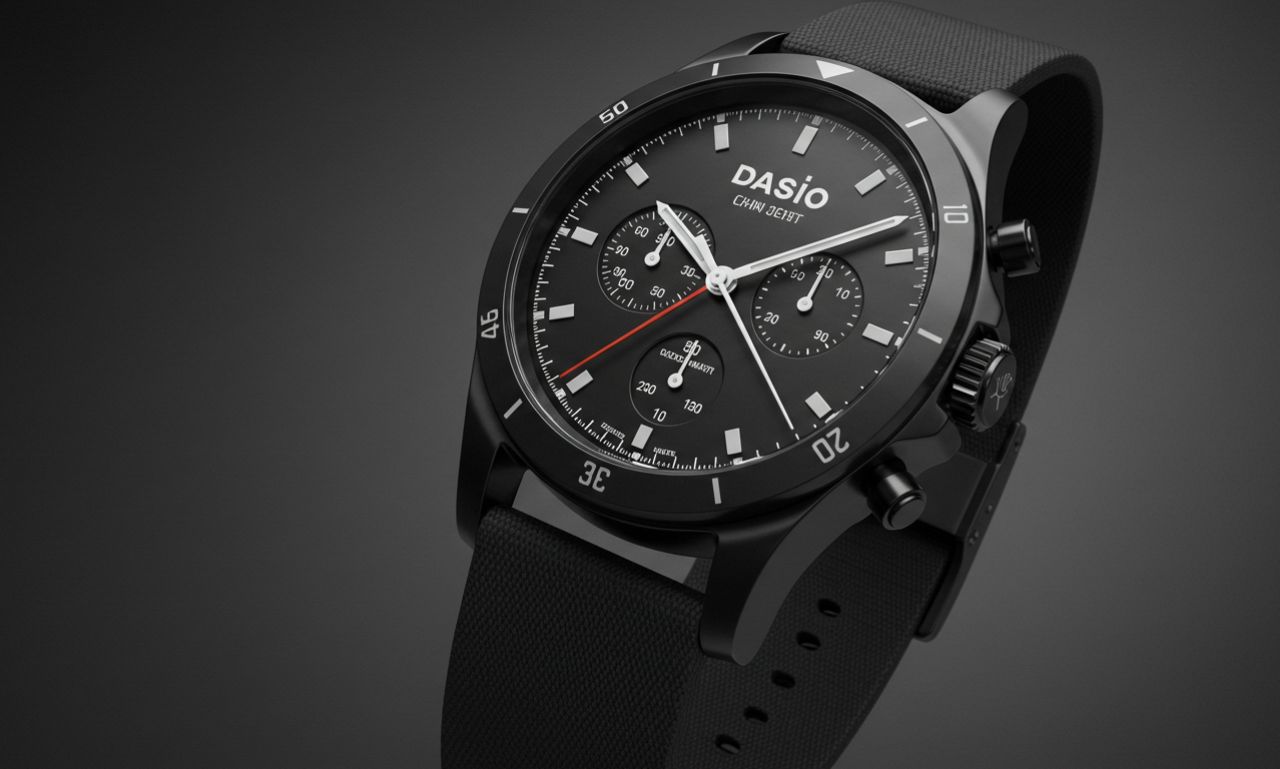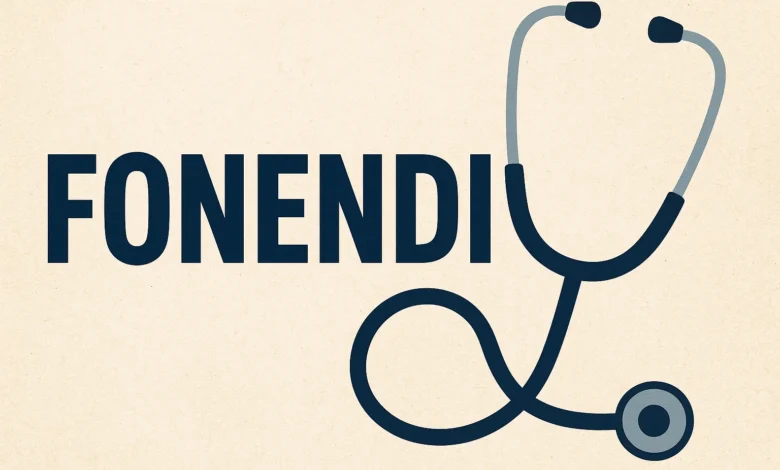
Casîo: A Modern Twist on a Timeless Brand
In this article, we explore casîo — a stylized name inspired by the famous electronics brand “Casio” — its likely origins, what it evokes, how it connects to Casio’s legacy, and why such a variant can matter in branding, culture, and perception. We will cover history, product lines, design philosophy, appeal, challenges, and future prospects.
1. Introduction: What is “casîo”?
When you first see casîo, you may assume it is a typo or stylized version of Casio. In many places online, “casîo” appears in blog posts, product-spotlight pages, or fashion-style discussions. For example, an article titled “Casîo – Timeless Technology in Watches & Electronics” presents casîo as a variant name for Casio. Interior Redoux
In the first paragraph itself, we mention the primary keyword casîo to anchor it. The question is: is casîo simply a stylistic variant (using a diacritical mark over the “i”) or does it carry some deeper or distinct meaning? In this article, we treat “casîo” as a brand-inspired variant, a creative reinterpretation of Casio, and explore what that suggests.
Through the rest of the article, we’ll refer to the original brand (Casio) frequently, since casîo is tied to Casio’s history, identity, and legacy. We’ll also examine why someone might choose the form “casîo” instead of “Casio,” and what it can represent in modern design, branding, and culture.
2. Origins and Possible Meanings
2.1 The original name “Casio”
To understand “casîo,” let’s first review where “Casio” comes from. Casio Computer Co., Ltd. (in Japanese: カシオ計算機株式会社, Kashio Keisanki Kabushiki-gaisha) was founded in 1946 by Tadao Kashio and his brothers. CASIO Official Website+2Wikipedia+2
“Casio” is simply the romanization of Kashio, the family name of the founders. So “Casio” is not an acronym, although some sites attempt playful backronyms (e.g. “Circumstance Attitude Standards Importance Overall”) Abbreviations — those are not historically accurate, just creative reinterpretations.
Over time, Casio has become synonymous with reliable electronics, especially calculators, watches, digital musical instruments, and various consumer devices. Wikipedia+1
2.2 Why “casîo” — the accent mark?
Putting a diacritical accent over the “i” to form casîo can serve several purposes:
- Stylization / branding flair: The accent gives a sense of uniqueness, design-consciousness, or artistic twist. It signals that the name is not just “Casio,” but a variant with a modern or fashion-forward twist.
- Phonetic cue: In some languages, an accent mark may alter pronunciation subtly or draw attention to a particular syllable. Though in English, “casîo” would likely still be read like “casio.”
- Trademark / domain uniqueness: Adding a diacritical mark can allow a variant name that is easier to trademark or secure a domain name when “casio.com” is taken.
- Cultural / aesthetic associations: The accent may evoke European or stylized forms, pointing to trends in design, art, or luxury that use diacritics to suggest sophistication.
Thus, casîo is not intended to replace Casio, but to exist alongside as a stylized representation or sub-brand (in conceptual discussions).
2.3 Usage of “casîo” online and in media
When you search “casîo” online, you’ll find pages like “Casîo: The Timeless Blend of Innovation and Style” that treat casîo as a synonym or alias for Casio, perhaps for aesthetic appeal. Wind Moon Magic Another site features “Casîo – Timeless Technology in Watches & Electronics.” Interior Redoux That suggests that in the digital design / lifestyle blogging world, “casîo” is used to frame Casio’s offerings in a more stylish, modern light.
Some observers also explore casîo as a “modern, stylized form of the well-known brand name Casio, but with a twist that changes its meaning from a purely corporate” usage. Height Magazine So in effect, casîo becomes a branding or narrative device: the known heritage of Casio, reimagined with aesthetic flair.
Unless you tell me “casîo” refers to something else (a local company, a new startup, etc.), we will continue with this assumption.
3. Casîo in Branding: Why the Accent Mark Matters
3.1 The power of small typographic change
In branding, small visual changes can carry weight. A change in diacritics, capitalization, spacing, or styling can differentiate a name subtly while preserving core recognition. Think of how “café” vs “cafe” signals a tone or tradition, or how “résumé” vs “resume” can hint at formality. Similarly, casîo tweaks the familiar into something slightly more stylized.
This small shift offers:
- Differentiation in crowded markets: In a world saturated with brands, subtle uniqueness helps. Casîo can stand apart visually in text, logos, web design, or social media.
- Evoking niche or luxury positioning: Accent marks often appear in fashion, design, and high-end branding to signal sophistication or international flair.
- Narrative of revival or reinterpretation: By altering the name, one suggests “this is Casio, but reborn, refreshed, or reinterpreted.”
3.2 Potential challenges with readability and recognition
However, using “casîo” comes with trade-offs:
- Recognition barrier: Some audiences may not immediately associate “casîo” with “Casio.” They might read it as an entirely different word, or misspell it without the accent, losing branding consistency.
- Search engine / digital issues: Search engines may not treat accented characters the same; people typing “casio” might not find “casîo” content. It also complicates SEO if both forms must be captured.
- Typography and font support: In some fonts or contexts, the diacritic may not render cleanly. It may degrade legibility, especially in small sizes.
- Trademark / legal issues: In legal or global branding, diacritical variants may or may not confer separate trademark protection depending on jurisdiction. A competitor might argue the names are too similar.
Thus, if “casîo” is to be used seriously as a brand variant, these issues must be managed carefully.
4. Casîo vs Casio: A Comparison
To understand what “casîo” brings beyond mere stylization, it helps to compare the two in various dimensions.
| Dimension | Casio (original brand) | Casîo (stylized variant) |
|---|---|---|
| Name origin | Family name Kashio, romanized | Visual variant of “Casio” with accent |
| Recognition | Globally known and established | More niche, artistic, design-focused |
| Associations | Durable electronics, calculators, watches, instruments | Evokes heritage + design refresh, lifestyle emphasis |
| Search / SEO | Strong presence, brand equity | Needs cross-referencing to “Casio” |
| Trademark clarity | Well-established, registered globally | Needs legal clarity; may be treated as variant |
| Audience appeal | Broad consumer electronics market | Design-conscious audiences, niche sub-brands |
In short, casîo leverages the equity of Casio but seeks to reposition or reframe it under a fresh aesthetic lens. The core identity and heritage of Casio remain critical — but casîo allows creatives and marketers to play with perception, design, and narrative.
5. History of Casio (the Original)
To fully appreciate what casîo evokes, it helps to revisit Casio’s history — the foundation on which casîo rests.
5.1 Founding and early years
Casio began in April 1946 as Kashio Seisakujo in Mitaka, Tokyo. The founder, Tadao Kashio, built small gadgets, components, and novelty items. CASIO Official Website+1
In 1949, Tadao saw a mechanical calculator demonstration and decided to build something more compact. Using profits from an invention (a yubiwa pipe, a ring that holds a cigarette) he and his brothers invested in developing calculators. CASIO Official Website+1
In 1957, the company formally became Casio Computer Co., Ltd. and released the 14-A, the first all-electric compact calculator. CASIO Official Website+1
5.2 Expansion into electronics
Over subsequent decades, Casio expanded into multiple product lines:
- Calculators: Scientific, graphing, financial, and basic calculators became staples in schools and offices worldwide.
- Watches: In 1974, Casio launched its first digital wristwatch, the Casiotron — the first to include an automatic calendar. Wikipedia+1
- Musical Instruments: In the 1980s, Casio introduced affordable keyboards, piano keyboards, and synthesizers for home use.
- Cameras & Imaging: Casio introduced compact digital cameras (e.g. the Exilim line), some of which pioneered features like LCD displays and ultra-compact form factors.
- Other devices: Casio has made label printers, digital dictionaries, PDAs, calculators with data storage, and even smart devices. Wikipedia+1
5.3 Milestones & innovations
Some notable milestones:
- The F-91W digital watch, introduced in 1989, became one of the world’s best-selling digital watches. Wikipedia
- The G-Shock series, launched in 1983, introduced rugged, shock-resistant digital watches. G-Shock is now a cult favorite among adventurers, athletes, and watch enthusiasts.
- Casio was among early pioneers of calculators with natural display formats (showing fractions or roots in textbook style), advanced functions, and solar power.
- In the camera world, Casio’s QV-10 was one of the first consumer cameras with a rear LCD screen.
- Casio also embraced integration: watches with radio-synchronization (Wave Ceptor), GPS, sensors for altitude, atmospheric pressure, and temperature.
Casio’s reputation has been built on combining affordability, reliability, and innovation.
6. Casîo’s Product Domains (Inherited from Casio)
If we treat casîo as a stylized or narrative version of Casio, then its “product domains” are inherited from Casio’s actual offerings. Here are the major ones:
6.1 Watches & Timepieces
- Digital watches: Classic digital displays, multiple functions (alarm, stopwatch, backlight).
- Analog-digital hybrids: Combining classic hands with digital sub-displays.
- G-Shock / rugged series: Tough, shock-resistant watches for outdoor and extreme use.
- Edifice, Pro Trek, Baby-G, etc.: Specialized lines for style, sports, outdoor, fashion.
Casîo, as branding, might highlight the design, minimalism, or fashion-forward styling of some watch models.
6.2 Calculators & Educational Tools
- Basic calculators: For arithmetic, ledger, basic school use.
- Scientific calculators: With functions, trigonometry, statistical functions.
- Graphing calculators: For advanced mathematics, engineering, programming.
- Financial calculators: Specifically for business, finance, accounting.
In the casîo narrative, calculators might be celebrated as elegant, efficient tools bridging function and form.
6.3 Digital Musical Instruments
- Keyboards and synthesizers: Home keyboards, digital pianos, portable synthesizers.
- Digital organs, sound modules: Devices for music production and live use.
- MIDI devices and controllers: Integration with digital audio workstations (DAWs).
Casîo could frame these as creative instruments for expression, blending engineering with artistry.
6.4 Imaging & Other Electronic Products
- Digital cameras: Compact models, innovative lens systems, mobile imaging.
- Label printers, data terminals, calculators with memory: Niche devices with practical use.
- Smart devices/IoT: In recent years, Casio has explored connectivity, sensor integration, and smart watch features.
Because casîo is a reimagined variant, its product domains would mirror these broad categories — but perhaps with stronger emphasis on design, lifestyle appeal, limited editions, or collaborations.
7. Design Philosophy and Innovation
One reason Casio (and hence, “casîo”) has commanded respect is its consistent design thinking and ability to innovate while keeping products accessible.
7.1 Form meets function
Casio products often balance simple, clean form with rich function. A digital watch may include many features (stopwatch, multiple time zones, alarms), yet be intuitively usable. Calculators must expose advanced capabilities without overwhelming a student.
In a casîo framing, designers might emphasize the aesthetic of minimalism merged with hidden complexity — something that looks sleek but hides powerful capabilities.
7.2 Durability and reliability
Casio built its brand on durability. G-Shock watches, for instance, are celebrated for being able to survive drops, shocks, water, and rough conditions. This gives consumers confidence.
Casîo, in narrative, could lean into “designs that last” — aesthetic longevity plus physical robustness.
7.3 Innovation under constraint
Casio has a history of innovating under cost constraints, finding clever engineering solutions to produce affordable, performant products. That spirit of ingenuity is something casîo could draw on as a storytelling motif — marrying elegance and brilliance without extravagance.
7.4 Collaborations and limited editions
In the realm of fashion, art, and design, limited edition or collab models often attract attention. Casio has done collaborations (designers, artists, brands). Casîo might push further in that direction — capsule editions, boutique designs, designer partnerships — using the accent in the name as a clue to exclusivity.
8. Cultural Impact and Global Reach
Casio’s influence is global; casîo as a narrative variant inherits some of that cultural resonance.
8.1 Everywhere in education
Casio scientific and graphing calculators are staples in schools and universities globally. Many students use Casio calculators every day. Casîo can evoke both nostalgia and trust — the memory of a calculator that helped you pass a class.
8.2 Pop culture and style
Certain Casio watches, especially the digital retro style, have become fashion statements. Vintage Casio digital watches are popular among style enthusiasts, influencers, and street fashion. The “retro tech-chic” aesthetic is something casîo could lean into.
The nickname Casio Royale given to the Casio AE-1200 model (in reference to James Bond) shows how even casual cultural associations emerge around Casio. WatchCrunch
8.3 Tech democratization
Casio has enabled people — students, creatives, hobbyists — to access technology affordably. This democratization is part of Casio’s heritage. Casîo’s narrative might lean on “technology for all, elevated by design.”
8.4 Global reach & adaptation
Casio has manufactured and sold products worldwide, adapting to local markets (e.g. watches with prayer times or compasses in Muslim-majority markets). Wikipedia Casîo could also signal a globalized design aesthetic, blending local flavor with universal appeal.
9. Challenges and Criticisms
No brand variant is perfect. Here are challenges casîo would need to confront (inherited from Casio or unique to the stylized variant).
9.1 Brand confusion
There’s a risk people will think casîo is a typo or misprint of Casio. That can erode credibility or cause inconsistent branding. Ensuring consistency in how you present casîo (logo, accent, capitalization) is crucial.
9.2 Market expectations vs premium positioning
Casio is often seen as a value brand — high performance at reasonable cost. If casîo tries to position itself as premium or exclusive, there may be tension: consumers may balk at paying much more for what is perceived as “just Casio with a different name.”
9.3 Technical constraints
If casîo wants to push design or premium materials, the cost of manufacturing, durability testing, and component sourcing becomes critical. Casio’s decades of manufacturing optimization set a high bar.
9.4 IP and trademark concerns
Using a variant of Casio can raise intellectual property issues. How distinct must the name or logo be to avoid being seen as infringing? Different jurisdictions treat diacritical variants differently. Legal counsel would need to vet casîo as a trademark.
9.5 Digital discoverability
Search engines and social media may not treat “casîo” and “Casio” equivalently. SEO strategies must ensure that people using either spelling find the intended content. Also, some social media platforms or domain systems may not support accented characters fully.
10. The Future of Casîo
If someone were launching casîo as a conceptual or real sub-brand, what could its future look like? Here are likely directions.
10.1 Limited-edition & boutique releases
Casîo could focus on curated, limited-production models (watches, calculators, musical instruments) with unique materials, artful finishes, and collaboration designs. The accent mark signals specialness.
10.2 Digital experiences and storytelling
Use digital platforms (websites, social media, augmented reality) to tell the casîo story — behind-the-scenes design, interactive visuals, designer interviews. Casîo’s branding is as much narrative as hardware.
10.3 Customization & modularity
Offer modular designs or user customization: changeable straps, faces, shells, or skins. Casîo could allow users to co-design. That fits the idea of design-focused variant.
10.4 Sustainability & longevity
With growing consumer attention to sustainability, casîo can emphasize durability, repairability, recyclable materials, and minimal waste. A “design that lasts” narrative aligns well.
10.5 Smart integration & hybrid tech
While staying true to Casio’s roots in hardware, casîo could embrace hybrid smart features: Bluetooth connectivity, companion apps, firmware updates, sensor integration — but in subtle, design-first ways rather than overt “smart gadget” feel.
10.6 Global design orientation
Casîo can adopt a cosmopolitan design language: blending minimalist Japanese design roots (from Casio) with influences from global fashion, Scandinavian minimalism, and modern typographic aesthetics. The accent mark fits into that blend.
11. Conclusion
casîo, as a stylized reinterpretation of Casio, represents much more than just a fancy spelling. It is a branding device, an aesthetic signal, and a narrative tool. It leans on Casio’s deep legacy of innovation, reliability, and global reach — yet invites reinterpretation through design, fashion, and storytelling.
In this article, we’ve:
- Defined what casîo likely means and how it connects to Casio.
- Explored why the accent mark is more than a flourish — it shapes perception.
- Compared casîo and Casio in brand, recognition, and market scope.
- Reviewed Casio’s history and product domains (watches, calculators, instruments).
- Examined design philosophy, cultural impact, and challenges.
- Speculated on casîo’s future paths: boutique releases, storytelling, sustainability, customization.



